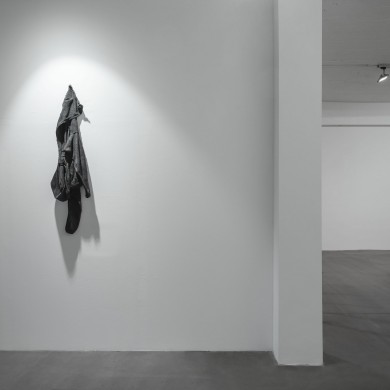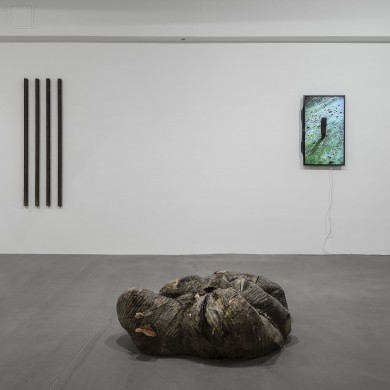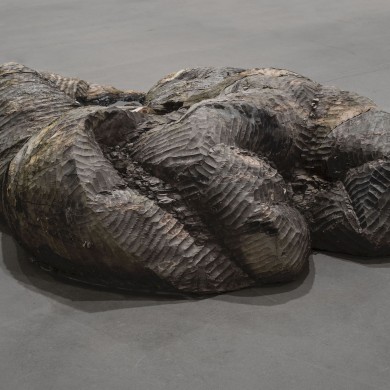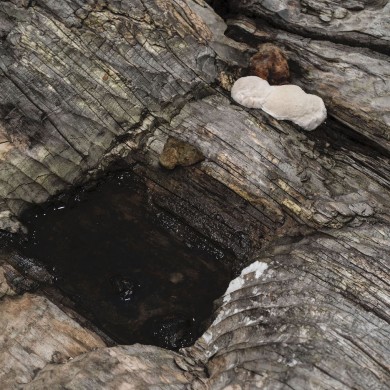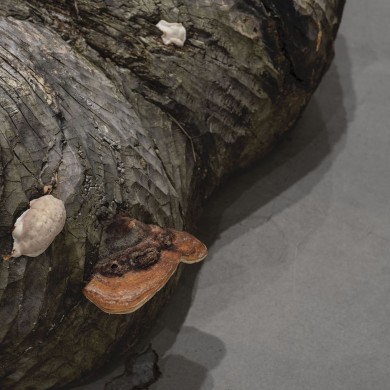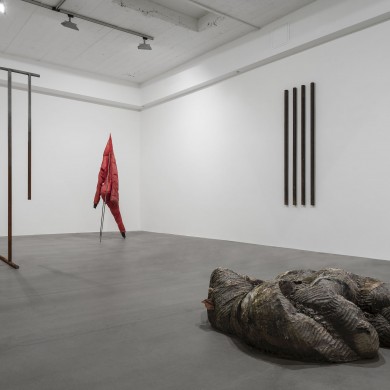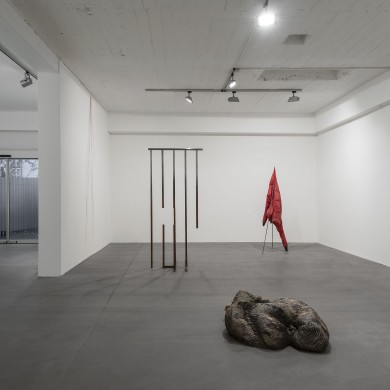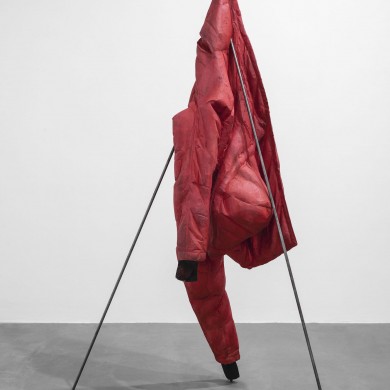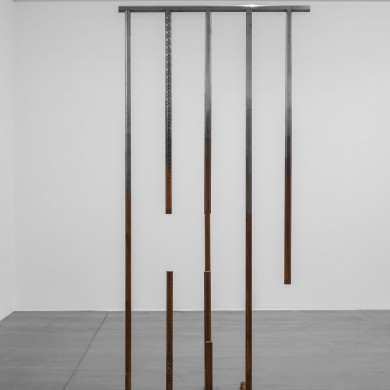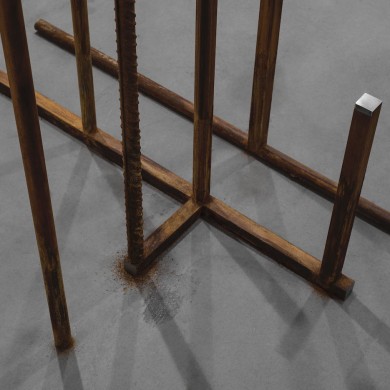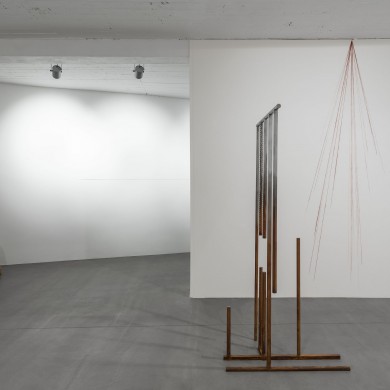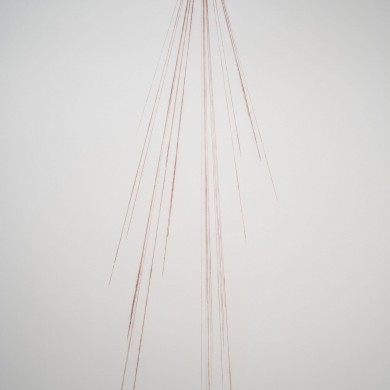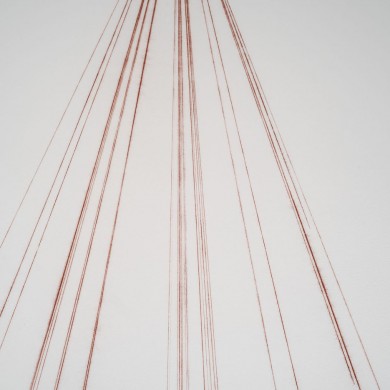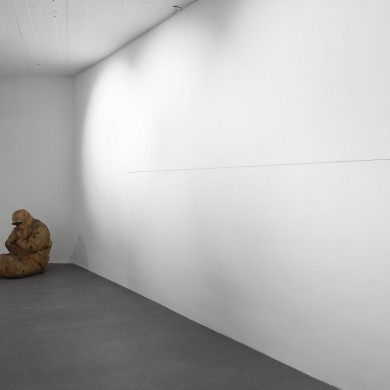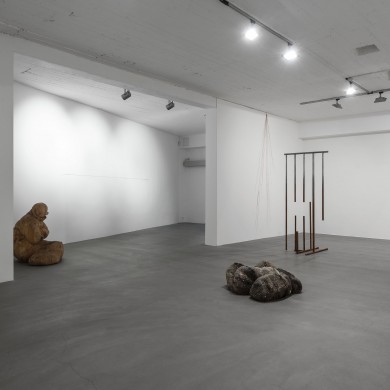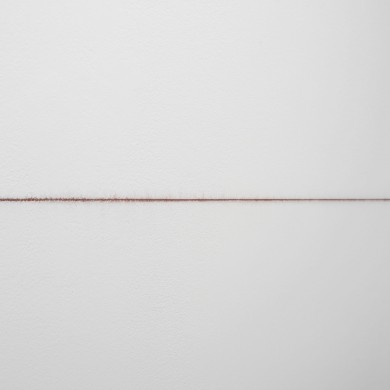Štefan Papčo | Verticality as Fantastic Occupation
curated by Elena Sorokina
8 Nov – 6 Dec 2019
Zahorian & Van Espen Bratislava
Mountaineering was often described as an adventure into a new vertical world. Indeed, the naked eye perceives mountains in the distance as a vertical plane, an absolute verticality crowned with rocky or snowy peaks. The charm of this hypnotic elevation was often enhanced and exaggerated in countless period sketches and drawings, featuring spectacular slopes. (Foreshortening—one of linear perspective’s most important techniques —was invaluable, as it made almost any slope look steep.)
This kind of “painters’ verticality” was, of course, a pure optical illusion. It was perspective that played tricks on those who gazed at the mountains. As scientists had demonstrated in the early nineteenth century, very few peaks in Europe came anywhere close to actual vertical planes and 90-degree elevations. Already by the end of the nineteenth century, climbing as “the conquest of verticality” was considered an anachronism. “Verticality” was acknowledged as a fiction, a literary exaggeration and part of the mountains’ modern myth.
In this context, climbers, with their own perspective on the issue, have always known better. The art of climbing is founded on, among other things, avoiding the extreme terrain and finding a route that circumvents the vertical. Unlike the painter’s linear perspective, or the troubled gaze of the observer, the climber’s perspective is neither an optical device nor pure vision. When you climb, sight loses its sensory primacy. Climbing is not about visual paradigms; it is performative, and deeply grounded in the body, movement, and gravity.
Štefan Papčo’s work is situated in such perspective, one of body and gravity, movement and perception. He belongs to a generation that understands what “verticality” stands for instead today rather in Hito Steyerl’s sense (1). In her ground-breaking reflection on “vertical perspective,” which has replaced the horizontal perspective of what we call early modernity, Steyerl reflects on what verticality has become: a dominant visual paradigm, an emblem of an oppressive system. Following Steyerl’s thinking, Papčo is suspicious of today’s vertical visuality, and his work traces it back to its origins, to the “modern obsession” it once was, and simultaneously questions it. Rooted in the cultures and techniques of climbing, his practice uses their body-based strategies; from the pool of performative modernities described in Hansen’s book, he recovers apocryphal elements and different ideas of verticality. Notable among these is his adoption of the way mountaineers perceive the vertical. This “climbers’ verticality” that Papčo activates in his work is contradictory, unstable, and performative. It rejects the god’s-eye perspective and opts for an individually lived experience of the “vertical” and its discontents. / Elena Sorokina
1. Hito Steyerl, In Free Fall: A Thought Experiment on Vertical Perspective. E-flux Journal #24 – April 2011
Supported using public funding by Slovak Arts Council as main partner![]()
Štefan Papčo | Vertikalitou zaujatí
kurátorka: Elena Sorokina
8.11. – 6.12. 2019
Zahorian & Van Espen Bratislava
Horolezectvo bolo často popisované ako dobrodružstvo v novom, vertikálnom svete. Prosté oko skutočne vníma hory v diaľke ako vertikálnu rovinu, absolútnu vertikalitu korunovanú skalnatými alebo zasneženými vrcholmi. Na nespočetných dobových náčrtoch a kresbách zachytávajúcich veľkolepé svahy sa čaro tejto hypnotickej vyvýšeniny často preháňalo a zdôrazňovalo. (Perspektívna skratka – jedna z najdôležitejších techník lineárnej perspektívy – sa ukázala ako neoceniteľná, keďže dokázala každý svah zobraziť príkro.)
Tento druh „maliarskej vertikality“ bol samozrejme obyčajným optickým klamom. Bola to práve perspektíva, ktorá sa zahrávala so zrakmi tých, čo pozorovali hory. Ako v ranom 19. storočí vedci preukázali, len veľmi málo európskych vrchov sa čo i len priblížilo naozaj vertikálnym rovinám a 90-stupňovým prevýšeniam a už koncom 19. storočia bolo lezenie ako „dobývanie vertikality“ považované za anachronizmus. „Vertikalita“ bola označená za fikciu, doslovné zveličenie a súčasť moderných mýtov o horách.
V tomto kontexte vedeli vždy horolezci, s ich vlastným pohľadom na vec, viac. Umenie lezenia je, okrem iného, založené na práci s extrémnym terénom a na objavovaní cesty, ktorá vertikalitu využíva. Na rozdiel od maliarskej lineárnej perspektívy alebo ustarosteného pohľadu pozorovateľa, nie je horolezcova perspektíva ani optickým nástrojom, ani čistou víziou. Keď človek lezie, pohľad stráca zmyslové prvenstvo. Lezenie nedemonštruje vizuálne paradigmy; je performatívne a hlboko zakorenené v tele, pohybe a gravitácii.
Práca Štefana Papča je situovaná presne v takejto perspektíve, v tele a gravitácii, pohybe a percepcii. Radí sa ku generácii, ktorá vie, čo „vertikalita“ predstavuje, v zmysle definovanom Hito Steyerl (1). Tá vo svojej prelomovej úvahe o „vertikálnej perspektíve“, ktorá nahradila horizontálnu perspektívu toho, čo nazývame ranou modernitou, reflektuje to, čím sa vertikalita stala: dominantnou vizuálnou paradigmou, symbolom opresívneho systému. V nadväznosti na myslenie Hito Steyerl je Papčo podozrievavý voči dnešnej vertikálnej vizualite a svojím dielom sa vracia k jej koreňom, k „posadnutosti modernitou“, ktorou kedysi bola a zároveň ju spochybňuje. Odvíjajúc sa od kultúry a techník horolezectva, Papčo využíva stratégie vychádzajúce z možností tela; z performatívnych modernít, popísaných v Hansenovej knihe, obnovuje apokryfné elementy a rôzne myšlienky o vertikalite. Pozoruhodným je jeho privlastnenie si spôsobu, akým horolezci vertikalitu vnímajú. Táto „horolezecká vertikalita“, ktorú Papčo vo svojich dielach aktivuje je protichodná, nestála a performatívna. Odmieta perspektívu „božieho oka“ a volí individuálne prežívanú skúsenosť „vertikality“ a jej nepokojnosti. / Elena Sorokina
1. Hito Steyerl, In Free Fall: A Thought Experiment on Vertical Perspective. E-flux Journal #24 – April 2011.
Fotoreport: Marko Horban
Projekt podporil z verejných zdrojov Fond na podporu umenia ako hlavný partner![]()
